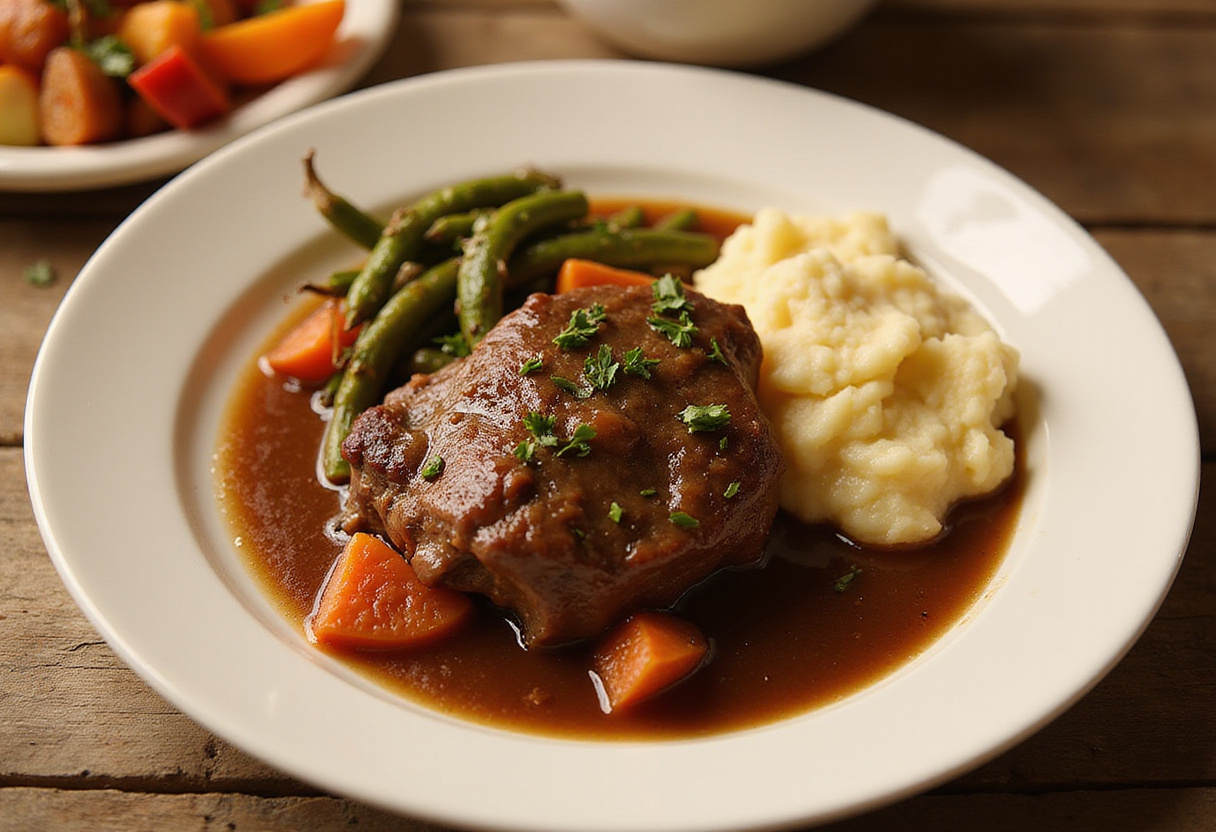Beef Shank Braising: Achieve Tender Perfection in Every Bite! 🥩🍷🕰️
1. Introduction
Braising beef shank is a time-honored culinary technique, a method passed down through generations, that transforms a tough, often overlooked cut of meat into a tender, flavorful delight that’s sure to impress. The secret, the very *key* to a perfect braise, lies in understanding and mastering the optimal cooking time. This article delves deep into the ideal duration for braising beef shank, ensuring that you achieve that coveted melt-in-your-mouth texture every single time you attempt this dish. Whether you’re a seasoned chef with years of experience under your belt or a passionate home cook eager to expand your culinary repertoire, mastering the art of braising will undoubtedly elevate your cooking skills to new heights. A well-braised beef shank, rich in savory flavor and boasting an incredibly tender texture, is more than just a meal; it’s a culinary experience, a dish that promises profound satisfaction with every single bite.
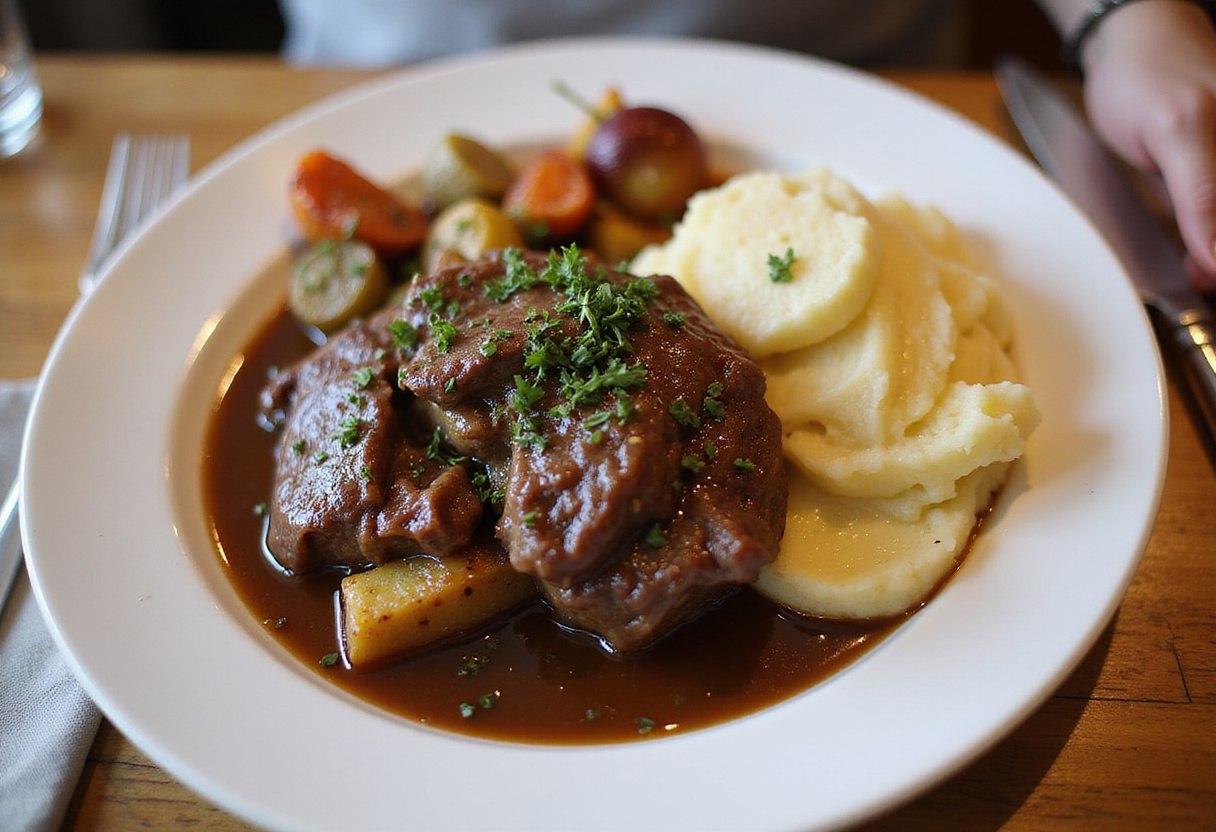
Knowing precisely how long to braise beef shank is absolutely crucial for achieving the desired tenderness. Braise it for too short a time, and the meat will stubbornly remain tough and unyielding; braise it for too long, and it can unfortunately become dry and lose much of its appeal. This comprehensive guide provides a thorough overview, meticulously designed to help you confidently navigate the braising process from start to finish. You’ll gain valuable insights into the various factors that influence braising time, as well as practical tips and tricks for ensuring consistent, reliably delicious results. Before you know it, you’ll be serving up perfect braised beef every time! Speaking of consistent result, do you know the secret to moist cake? They both have to do with time and temperature!
So, let’s embark on this culinary journey together and explore the closely guarded secrets to perfectly braised beef shank, a truly remarkable dish that’s destined to become a firm favorite in your kitchen. And if you’re looking for another impressive dish, be sure to learn about the braised beef shank with wine and tarragon.
2. Understanding Beef Shank
Beef shank, a cut taken directly from the leg of the cow, is widely recognized and appreciated for its remarkably robust flavor profile and its naturally high collagen content. Due to its inherent toughness, this particular cut unequivocally demands slow, moist cooking methods – such as braising – to effectively break down those tough connective tissues that would otherwise make it difficult to enjoy. During the braising process, something magical happens: the collagen gradually transforms into gelatin, significantly contributing to the meat’s exquisitely succulent texture and the creation of a luxuriously rich sauce. A full understanding of the inherent composition of beef shank is absolutely essential when determining the appropriate braising time needed to achieve that highly sought-after optimal tenderness. Thinking of baking a cake as well? Learn chocolate pound cake explained!
3. Factors Influencing Braising Time
Several key factors exert a notable influence on the required braise beef shank time, and it’s important to be aware of these as you plan your cooking schedule. Firstly, the size of the individual beef shank pieces matters significantly; naturally, larger pieces will necessitate longer cooking times to ensure they are cooked all the way through. Secondly, the precise temperature of your oven or stovetop plays a pivotal role in the overall cooking process, with higher temperatures potentially shortening the required cooking time, but also carrying the risk of uneven cooking or a less-than-ideal, tougher result. Finally, the amount of liquid used in the braising process, as well as the specific type of braising liquid employed (whether it’s a classic beef broth, a robust red wine, or another flavorful option), can also subtly influence the overall cooking time. Skillfully adjusting these factors will grant you remarkably precise control over the final outcome of your braised beef shank. And if baking if your thing, read about pound cake vs regular cake.
4. Preparation Steps for Braising Beef Shank
Meticulous preparation is absolutely key to ensuring successful braising, so don’t be tempted to skip this crucial step. Begin by carefully trimming any excess fat from the beef shank, as this will help to prevent the braising liquid from becoming overly greasy. Next, season the shanks generously with a liberal application of salt, freshly ground black pepper, and any other desired spices or herbs that complement the flavor profile. Don’t be shy with your seasoning! Searing the beef shanks before the braising process itself commences significantly enhances their inherent flavor by creating a deliciously rich, browned crust on the exterior. This step not only improves the texture but also adds considerable depth and complexity to the braising liquid. Searing helps to develop layer upon layer of complex flavors that are then infused throughout the entirety of the dish during the extended cooking process. Just like in a 3 layer german chocolate cake recipe, every step matters!
Step 1: Sear the Beef Shank
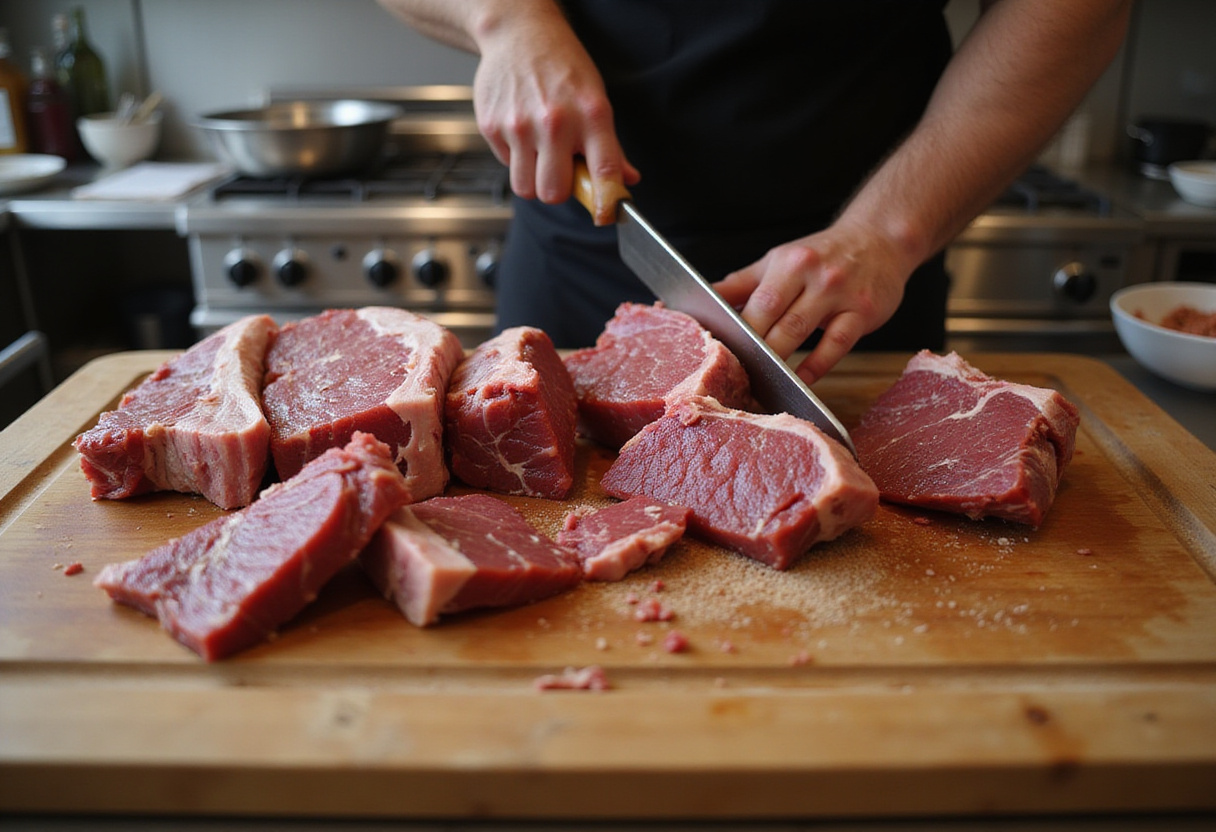
Commence the searing process by heating a generous amount of oil in a large, heavy-bottomed pot, such as a Dutch oven, over medium-high heat. Once the oil is sufficiently hot, carefully place the seasoned beef shanks into the pot, ensuring not to overcrowd them. Sear the shanks on all sides until they develop a richly browned crust, taking care not to burn them. Remove the shanks from the pot and set them aside. This searing process is absolutely critical for developing the robust and multifaceted flavors that are characteristic of well-executed braised dishes. Have you tried magic before? Magic cookie bar recipe condensed milk!
Step 2: Sauté Aromatics
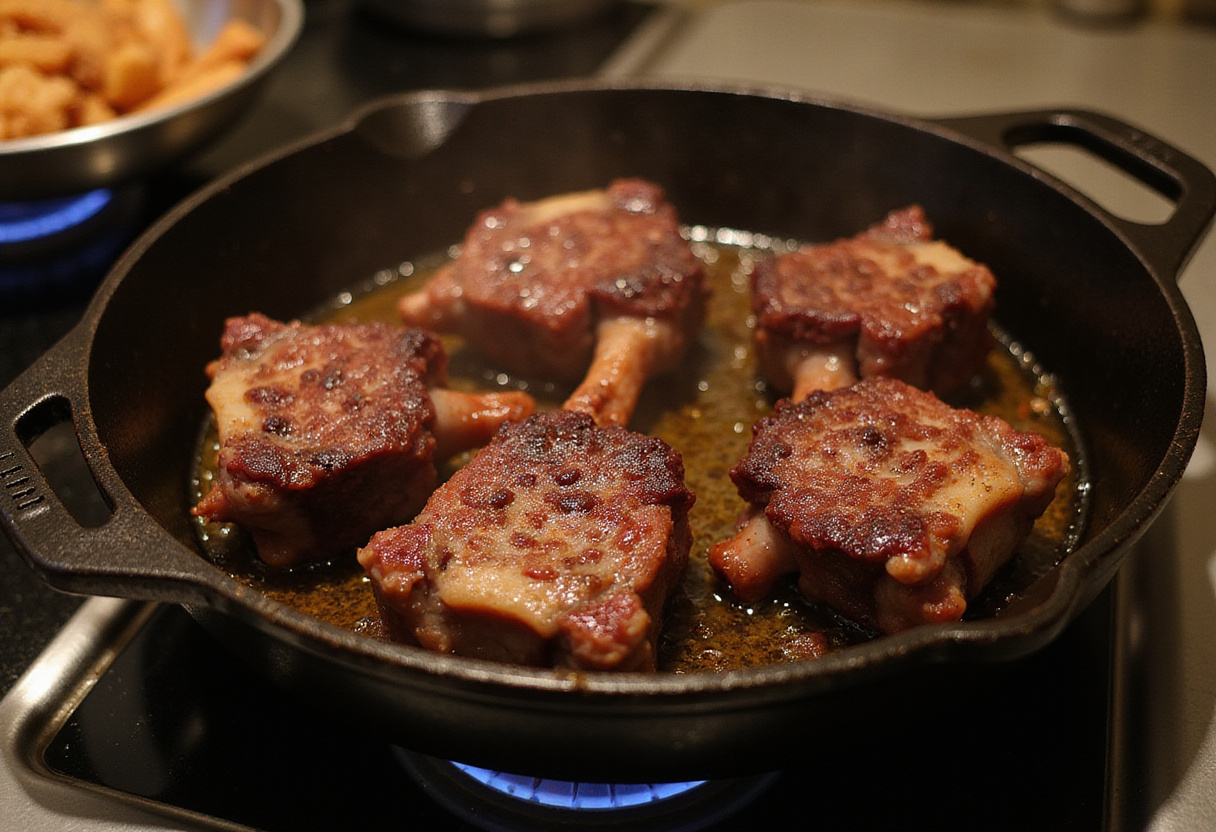
Add a medley of chopped aromatic vegetables, such as onions, carrots, and celery (the classic mirepoix), to the pot, and sauté them until they soften and develop a light caramelization. These aromatics form the very foundation of the braising liquid’s flavor profile, making a substantial contribution to the overall depth and complexity of the finished dish. Sautéing them properly ensures that they fully release their flavorful compounds, infusing the entire dish with their aromatic essence. Want to make sure your magic cookie bars are not too gooey? See why are my magic cookie bars gooey.
Step 3: Deglaze and Add Liquid
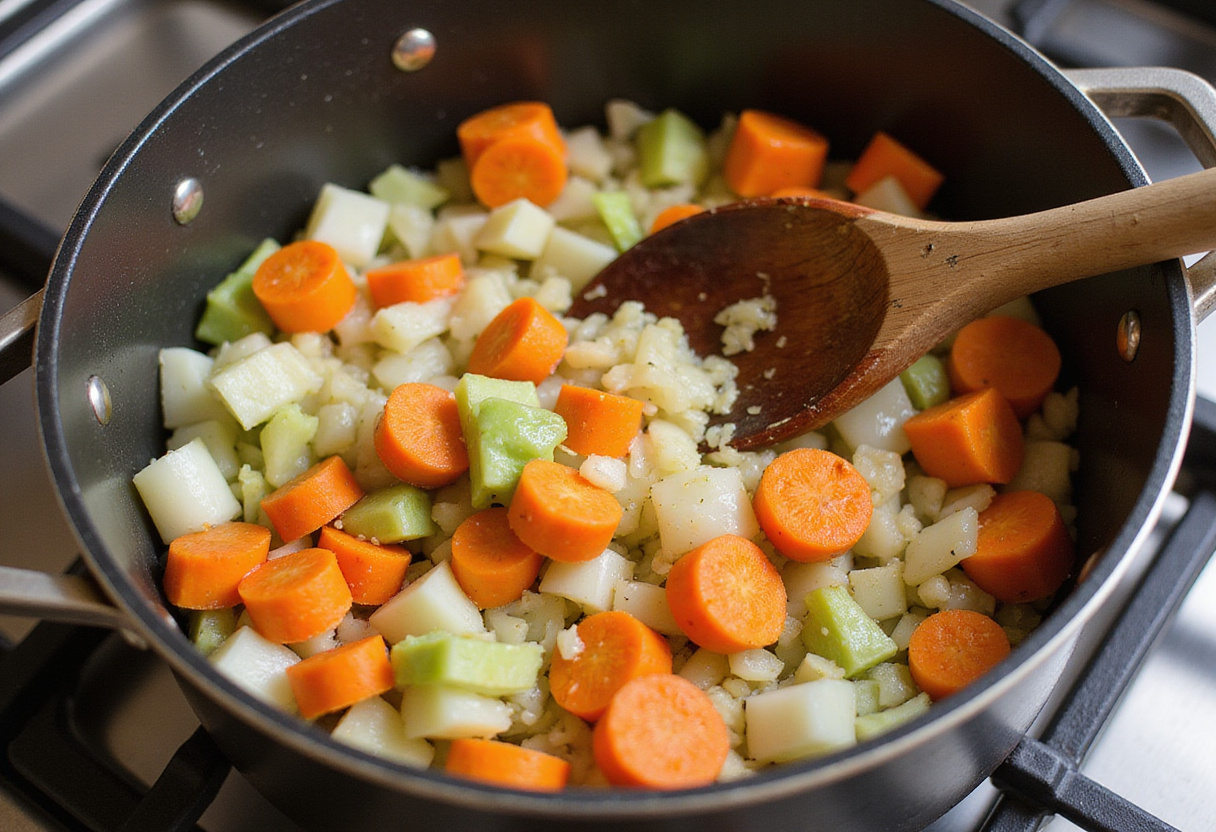
Pour in a generous amount of red wine or flavorful beef broth to deglaze the pot, being sure to scrape up any of those delicious browned bits that have accumulated on the bottom – these bits are packed with flavor. Return the seared beef shanks to the pot, nestling them amongst the aromatics. Add enough liquid to nearly cover the shanks, ensuring that they are mostly submerged. The liquid serves to keep the meat consistently moist and tender throughout the extended braising process, preventing it from drying out. Ensuring that just the right amount of liquid is present is essential for promoting even and consistent cooking. Try eagle brand magic cookie bars too!
Step 4: Braise the Beef Shank

Cover the pot tightly with a lid and transfer it to a preheated oven, or alternatively, gently simmer it over low heat on the stovetop. The key is to maintain a consistent low and steady temperature throughout the braising process. Proper braising fundamentally involves slow cooking over an extended period. This technique is essential for allowing the beef shank to break down gradually, resulting in an incredibly tender and succulent final product. Are you gluten intolerant? Simple gluten-free sugar cookies are tasty too!
5. Optimal Braising Time
Generally speaking, braising beef shank typically requires approximately 2.5 to 3.5 hours when cooked at a low temperature (around 300°F or 150°C). However, it’s essential to remember that this is just a guideline, and the actual cooking time may vary depending on several factors, such as the size and thickness of the shanks, as well as the specific characteristics of your oven or stovetop. Begin checking the meat’s tenderness after the initial 2.5-hour mark. The beef shank is considered ready when it can be easily pierced with a fork and effortlessly pulls apart with minimal resistance. Adjust the braise beef shank time accordingly, based on your personal preference for tenderness. For a sweeter treat, check out gluten-free sugar cookies recipe.
6. Checking for Doneness
The absolute best and most reliable way to check for doneness is to use a fork to gently pierce the meat at its thickest point. If the fork effortlessly slides in with very little resistance, and if the meat exhibits an exceptionally tender texture, then it is a clear indication that it is ready. Alternatively, you can also employ a meat thermometer to confirm the internal temperature, which should ideally register around 200-205°F (93-96°C). The ultimate success of your braised beef shank recipe hinges on achieving precisely the right level of tenderness, so it’s crucial to carefully monitor the cooking process. If you’re substituting flour, then check flour substitutes for sugar cookies first.
7. Tips for Perfect Braising
To ensure a truly perfect braising outcome, it is essential to maintain a consistent and stable temperature throughout the entire cooking process. Avoid the temptation to lift the lid too frequently, as doing so can result in a loss of both heat and valuable moisture, which can inadvertently prolong the overall cooking time. If you observe that the liquid is reducing too rapidly, don’t hesitate to add more broth or water to maintain an adequate level of moisture and keep the meat adequately covered. Allowing the braised beef shank to rest and luxuriate in the braising liquid after cooking is complete will further enhance both its flavor and its overall tenderness, ensuring a truly exceptional culinary experience.
8. Serving Suggestions
Braised beef shank is an incredibly versatile dish that lends itself to a wide array of serving options. It is absolutely delicious when served over a bed of creamy mashed potatoes, polenta, or a perfectly cooked risotto. The rich and intensely flavorful braising liquid can be skillfully reduced to create a delectable sauce that beautifully complements the meat. For a well-rounded and satisfying meal, consider pairing the braised beef shank with an assortment of roasted vegetables or a fresh, vibrant salad. The inherent versatility of braised beef shank makes it a fantastic addition to any menu, and it can be elegantly served as a centerpiece for special occasions and celebratory gatherings.
9. Conclusion
Mastering the art of how to braise beef shank involves acquiring a comprehensive understanding of the correct braising time, employing meticulous preparation techniques, and mastering all the essential cooking techniques. By diligently following the guidelines and tips outlined in this article, you can consistently create a dish that is not only exceptionally tender and flavorful but also deeply satisfying. With the right beef shank cooking time and a little practice, you’ll be able to impress your family and friends with your culinary prowess, transforming an often-overlooked cut of meat into a truly unforgettable dining experience.

